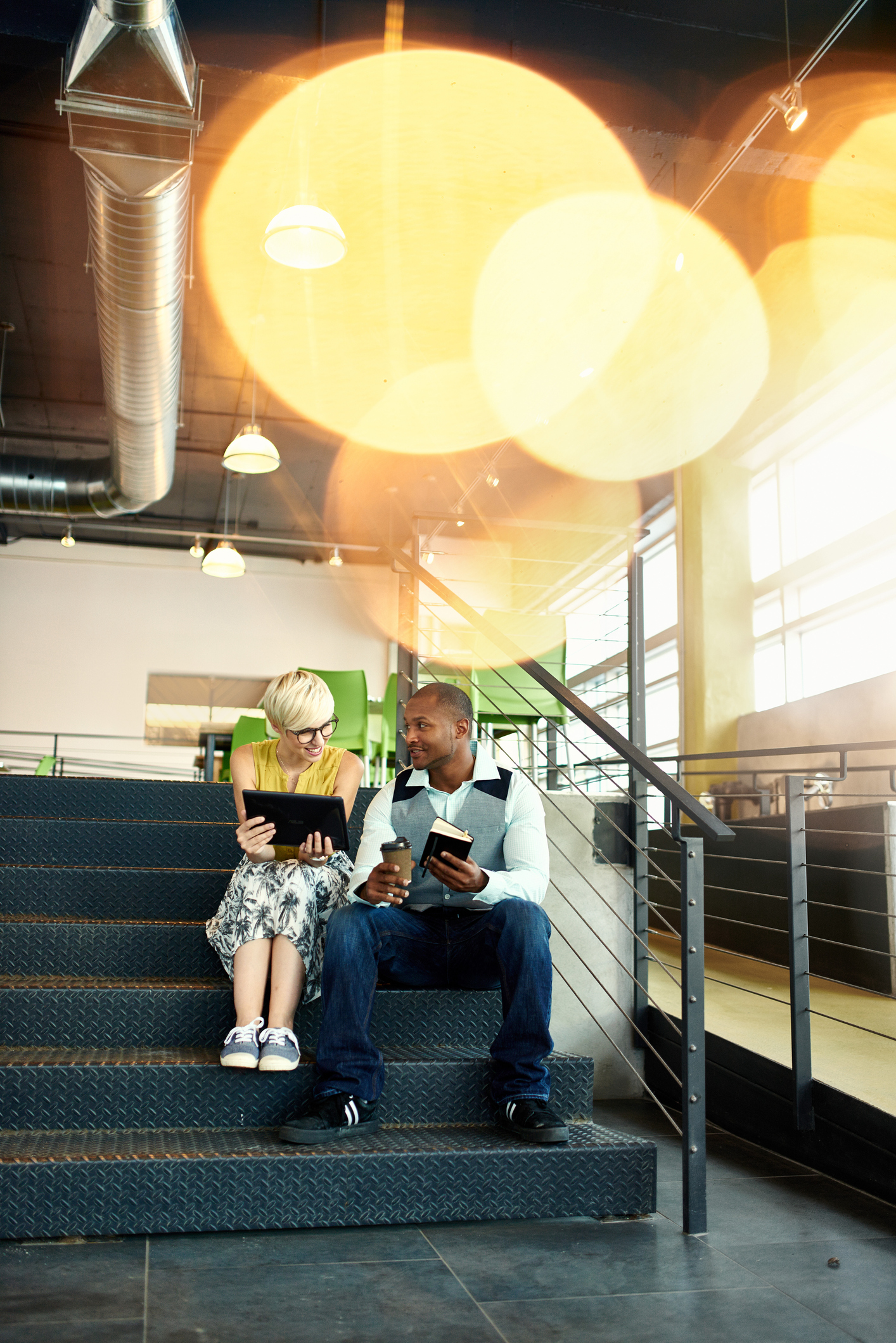The Future of eCommerce: Headless API
The world is changing and eCommerce is developing faster than ever.
With consumers consuming content and making purchases through many touchpoints traditional eCommerce platforms are in need to accelerate innovation.
There are new purchase buttons on many devices, from tablets to IoT in the kitchen and laundry rooms. You can even by with voice commands with Alexa and Google Home, read reviews, and place orders. The new consumer is adapting to the new IoT era, even if most retailers are not yet.
eCommerce companies who are moving with this trend are gaining market share, while others are facing challenges to move ahead. One of the major challenges is how to create these new channels, how to build these solutions?
The answer is API Headless eCommerce.
What is headless API ecommerce?
Is an eCommerce Solution that stores, manages, monitor, delivers any product or service without a default front-end delivery channel. Meaning you can build your own customer experiences with it.
With a headless eCommerce platform, the front-end (or the “head”), which can be a template, theme, or any desire storefront, is decoupled and can be changed, removed, or added to innovate your unique customer experience and consume the same backend.
Developers can use APIs to deliver things like products, quantity in stock, customer reviews, or top-selling items to any screen or device, while the front-end developers can build in any framework, channel, or device.
Basically, all functional elements (such as forms, blogs, banners, products, etc.) of the system can be programmatically managed. This includes the creation and management of the content components.
In other words, headless eCommerce architecture is built for the new age (mobility, IoT, hyper-personalization)
In contrast, traditional eCommerce platforms have their heads define and locked. They have a predefined front-end that is tightly coupled with the back-end, so even if there are plenty of customization features and unrestricted access to code, the platform is only designed to deliver content in the form of websites and maybe native mobile apps.
A headless API eCommerce architecture delivers a platform via a RESTful API that has a back-end data model and a cloud-based infrastructure. Since the platform is not coupled with the back-end, new eCommerce brands can build and deliver anything to satisfy customer needs.
Now new eCommerce players can build products, services, and payment gateways on top of smartwatches, kiosk screens, Alexa devices, and everything you can imagine.
How headless API eCommerce works
An eCommerce platform or software as a service works by communicating between the presentation or front-end channel and application layers through web services or application programming interface (API) calls.
So for example, when a user clicks a “Buy Now” button on their smartphone, the presentation layer of the headless eCommerce platform sends an API call to the application layer to process the order. The application layer responds with another API call to the front-end layer to show the customer the status of their order.
Headless API ecommerce vs traditional ecommerce
Here are three main differences between traditional ecommerce platforms and API headless ecommerce services:
1. You build your own front-end
Traditional eCommerce
Front-end developers working on a traditional commerce system encounter several constraints when it comes to design and the overall process. Any changes made would require a great deal of time to edit the database, the code, and the front-end platform as well. Developers are also limited to what can be updated and/or edited without the risk of voiding a warranty or preventing any future upgrades.
API Headless eCommerce
With the removal of the default front-end layer, headless eCommerce enables front-end developers to create a user experience from zero which fits perfectly with their target market needs. Front-end developers don’t need to worry about modifying databases in the backend as all they have to do is make a simple API call. In other words, front-end developers are given all possible tools to craft personalized customer experiences.
Here you can work with product managers, innovation managers, and marketers, to define what is the best experience for your company.
An API headless solution is far better than a based template
2. Full customization & personalization
Traditional eCommerce
Traditional platforms offer a predefined experience for both your customer and for the administrative user. But these platforms do provide not much flexibility for customization or personalization. If you are satisfied with the experience provided by these traditional platforms, that experience is the default for all customers.
API Headless eCommerce
Traditional eCommerce platforms constrain developers and users to what they define as the correct user experience. With API headless platforms, since there is no front-end, developers can create their own user experience from zero. You have more control over the look and feel of your eCommerce platform and you also have control over the user experience for both your customer/merchants and your admin users.
3. More flexibility and adaptability
Traditional eCommerce
In traditional solutions, the front-end is tightly coupled with the back-end coding and infrastructure. This leaves little or no room for flexibility to make any desired customizations. To make single customization, developers need to edit multiple layers of coding between the front-end right through to the database layer that is defaulted in the back-end.
API Headless eCommerce
Since headless eCommerce has already decoupled the front-end and the back-end, this creates endless possibilities for customization when required. To make any changes, you simply need to have a front-end user experience developer. You can make changes either big or small, from implementing a custom checkout flow to adding a new field to a customer account — both are very straightforward to execute with an API headless eCommerce architecture.
API Headless ecommerce: Advantages
The biggest retailers are switching to API headless ecommerce; there are many reasons why your Brand needs to do it too.
1. Omnichannel
A headless content management system will help publish your content anywhere. For an eCommerce site, that means showing and selling your products, discounts, or customer reviews to any channel you want to.
You can sell through Alexa, your mobile app, progressive web apps, and even through refrigerators with screens.
With a natively headless API eCommerce platform — like Arcadier — you don’t have to re-architect your platform to publish across channels. It’s made from architecture to be decoupled from the original user template, it is made to facilitate building your own customer experiences.
2. Keep your competitiveness
A headless API eCommerce platform enables you to deploy constant updates without impacting your back-end system or other services like Purchase History, Checkout process, onboarding process, you can completely customize your marketplace experience. So you can easily make any changes to your front-end to match consumer needs and market trends.
Major eCommerce brands using traditional platforms usually roll out an update every few weeks. In comparison to market leaders whom they deploy updates every day or every week, with less service interruption.
With a decoupled system, you don’t have to roll out an update to the entire system, only part of the system. You can update and deliver what your consumers want faster, with less impact on the overall system and keep your competitiveness.
3. Agile Marketing
A headless API eCommerce system can encourage new technology adoption with ease. This is perfect when designing new customer experiences. The system architecture helps marketing and business teams deploy multiple sites across different brands, divisions, and portfolios.
Finally, thanks to the flexibility provided by a headless API eCommerce platform, marketing teams deploy a new site in days instead of months, your brand can reduce the time-to-market when launching a campaign from a few weeks to a few days.
4. More personal and consistent customer experience
The customer experience must be consistent within your brand and stores, even though customer needs may change over time, they should receive a consistent customer experience across all devices and channels.
Customers want to buy from eCommerce brands that understand their needs across all channels. The eCommerce company already knows what a consumer has bought some items. It uses this data to power the personalization of eCommerce, mobile apps, and social channels.
5. Seamless Integrations
As you may already know, a headless eCommerce solution must have an API, which makes it easier to integrate and communicate with other front-end devices. You can add new devices, expand to new opportunities, and outreach to more customers using the same API. Also, it will take your team weeks to integrate your eCommerce platform with a new device, not months.
Towa customers experienced this first hand, using Arcadier headless API eCommerce platform to integrate with Legacy systems and ERP, an integration that helped streamline their customer journey workflows.
6. Better conversion
With a headless API eCommerce platform as a service, you can try and test different templates and approaches. For example, you could experiment with a different back-end search solution while running the same front-end search.
A headless API eCommerce allows you to run continuous tests and optimization cycles which will help you get a better understanding of your customer, while improving your rate of learning faster than others retailers.
7. Faster time-to-market
If you plan to build a multi-channel or Omni-channel eCommerce experience with a traditional eCommerce platform, your time-to-market will be slower, moreover scaling will be difficult to achieve.
A headless API eCommerce platform empowers brands to focus on building front-end experiences on different devices and touchpoints, the content and listings are stored centrally and delivered via API to everywhere you want to. Decouple architecture facilitates a faster time-to-market better suited when planning to open new channels, entering new countries, and innovating the market.

The shortcomings of headless eCommerce
Headless API eCommerce platforms have a few issues that need addressing.
1. Manage costs
A headless eCommerce platform does not provide you with a front-end, developers will be required to build their own. This is great, as it allows developers to build front-ends that are bespoke for each device and touchpoint. On the other hand, building templates and user interfaces from scratch can become time-consuming and costly. Additionally, developers will need to troubleshoot and work their front-end creations, leading to ongoing costs beyond the initial build.
The costs increase even further when you factor in the fact that the marketing team now depends heavily on the IT team to launch landing pages and content on different devices.
2. Marketing efforts
A pure headless API eCommerce platform offers no front-end presentation layer, so marketers will not be able to:
- Create content in a WYSIWYG editor.
- Preview pages to see how it will look like on the end user’s device or screen.
- Immediately prototype, review, create and publish content without relying on the IT department.
Marketers are dependant on the IT team not just to build the front-end presentation layer, but also to update it and populate it with content.
Not a marketer-friendly environment.
Headless API eCommerce supports omnichannel experiences
The concept of “omnichannel” means that a customer can use the same online platforms to shop both online and offline, on any device, at any time. The main objective of headless API eCommerce platforms is to offer a seamless customer experience across channels, these eCommerce platforms are a fundamental component of the omnichannel retail experience.
Customers who used multiple channels to purchase online buy more than those who only used a single channel. Plus, those customers who used multiple online channels purchased more at the brick-and-mortar stores than those who used only an individual channel.
Other headless eCommerce platforms to evaluate
Headless eCommerce is an emerging space, however, there is a variety of eCommerce platforms offering APIs that facilitate a headless or decoupled approach to eCommerce. Here are three software providers to consider in the space:
1. Shopify Plus
Shopify Plus users have access to APIs which can expose products and selling options information to third-party systems. Still, a CMS will be needed to handle additional content at scale. Company based in the USA.
2. Magento 2
Magento 2 users can leverage Magento APIs to showcase and sell products but will need to rely on a third-party web CMS to handle large quantities of content at scale. Company acquired by Adobe based in the USA.
3. Arcadier
A full headless API eCommerce platform as a service is an all-in-one headless commerce solution that can power omnichannel eCommerce experiences. Customers such as B2B medical suppliers, B2C homemade foods, and C2C service experiences delivered to your home, and many other different business models have used Arcadier Marketplace builder to power their eCommerce digital experiences. Company HQ in Singapur, with offices worldwide, in all major cities London, Australia, Mexico, Las Vegas.
The future of commerce: decoupled
A headless API eCommerce solution resolves many issues (nowadays the emerging technology of wearables and house devices powered with IoT), it also conceives other issues to manage, as discussed earlier.
A decoupled eCommerce platform is similar to a headless system in the sense that both front-end and back-end are decoupled. However, unlike a headless eCommerce, a decoupled eCommerce doesn’t remove the front-end delivery layer from the equation entirely. This architecture gives marketers back their power in the form of content authoring and content previewing, while also giving the brand the same headless freedom needed to deliver content to different devices, applications, and touchpoints through APIs.
You could say a decoupled eCommerce gives you the best of both worlds—and that’s why we foresee the future of eCommerce is decoupled.
A decoupled eCommerce system provides ease-of-use similar to traditional eCommerce software but with the flexibility of a headless system.
It’s the best of both.
Talk to us Book a 15-min call to discuss your project.



